The Sacred Kaaba: A Journey Through Its History, Renovations, and Features
The Sacred Kaaba, located in the heart of the Grand Mosque in Mecca, is the most revered structure in Islam and the qibla (direction of prayer) for Muslims around the world. As the Quran states, "Indeed, the first House [of worship] established for mankind was that at Bakkah - blessed and a guidance for the worlds" (Al-Imran 3:96).
The phrase "the first House [of worship] established for mankind" carries profound significance in Islamic tradition. Scholars have interpreted it in various ways, emphasizing the Kaaba's primordial and preeminent status. Imam Baghwi in his Tafseer, says that some believe that the Kaaba was the first structure to appear on the surface of the water during the creation of the heavens and the earth, predating the earth by 2000 years. Others suggest that it was the first physical building constructed on earth by Prophet Adam as a place of worship for Allah. Additionally, there is a view that angels built the Kaaba before the creation of Adam, making it a site of pilgrimage even for celestial beings. This ancient origin underscores the Kaaba's enduring importance as the original and foremost sanctuary for monotheistic worship, symbolizing continuity and permanence in the spiritual life of humanity.
The History of the Kaaba's Construction
The valley of Ibrahim where the Kaaba stands was barren, without any vegetation or water. Allah commanded Prophet Ibrahim to settle his family there. In Sahih Bukhari, a long hadith mentions this: "Did Allah command you to do this?" She (Hajar) asked. "Yes," he replied. She said, "Then He will not neglect us." Obeying his Lord's command, Ibrahim settled his wife Hajar and their infant son Ismail there and prayed: "Our Lord, make this a secure city and provide its people with fruits..." (Al-Baqarah 2:126).
Allah answered his prayer, bringing forth the Zamzam well and providing sustenance, which attracted people to the valley. Allah then guided Ibrahim to the site of the Kaaba and commanded him to rebuild it. Ibrahim's young son, Ismail (peace be upon him), brought the stones while Ibrahim built the structure. The building rose higher and higher until it became too tall to reach by hand. At that point, Ibrahim asked Ismail to bring him a stone to stand on so he could complete the construction. This stone is now known as "Maqam Ibrahim" near the Kaaba.
After completing the construction, Ibrahim prayed again: "Our Lord, I have settled some of my descendants in an uncultivated valley near Your sacred House. Our Lord, that they may establish prayer. So make hearts among the people incline toward them and provide for them from the fruits that they might be grateful." (Ibrahim 14:37).
Various tribes settled in the area, with the Amalekites, Jurhum, Khuza’a, and Quraysh taking turns in maintaining the Kaaba. When the Quraysh tribe took control of Mecca, they decided to rebuild the Kaaba with a strong structure to withstand the floods that occasionally struck Mecca, weakening its foundation. This reconstruction took place five years before the Prophet Muhammad’s (peace be upon him) prophethood, around 605 CE. The Quraysh increased the height of the Kaaba by nine cubits, making it 18 cubits tall. They completely sealed the western door, leaving a single door on the eastern side, elevated to prevent everyone from entering. They also added a roof for the first time. However, due to limited resources, they left a part of the original structure, known as the Hijr, outside the new building.
The Prophet Muhammad (peace be upon him) expressed a desire to rebuild the Kaaba on the original foundations laid by Ibrahim and include the part left out by the Quraysh. He also wished to have two doors at ground level, one on the eastern side and another on the western side. As narrated by Aisha (may Allah be pleased with her): "If your people had not recently abandoned ignorance (unbelief), I would have ordered that the Kaaba be demolished and rebuilt upon the original foundation laid by Ibrahim, with two doors, one on the east and one on the west." (Bukhari).
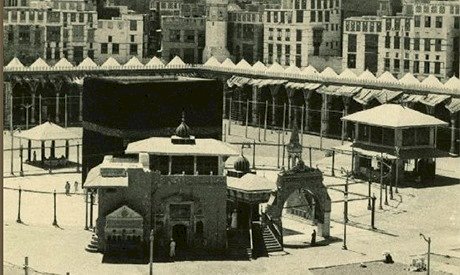
The History of the Kaaba's Reconstruction
In 64 AH, when Abdullah bin Zubair (may Allah be pleased with him) took control of Hijaz, the Kaaba was burned down by attack of Yazid bin Muawiya. Then Abdullah bin Zubair demolished it down to the foundations laid by Prophet Ibrahim and rebuilt it in accordance with the Prophet Muhammad's (peace be upon him) wishes. This included incorporating the part that the Quraysh had left out, known as Hijr Ismail, thus restoring the Kaaba to its original form from Ibrahim's time. He also increased its height by an additional ten cubits beyond what the Quraysh had built, and he added two doors on the eastern and western sides at ground level.
After seizing control of Makka from Abdullah bin Zubair and killing him, Umayyad Caliph Abdul Malik bin Marwan (died 86 AH), ordered the Kaaba to be rebuilt as it was before Abdullah bin Zubair's reconstruction. The northern wall was demolished, Hijr Ismail was left outside, and only one door was kept, which was elevated. However, the height established by Abdullah bin Zubair was retained.
Historians agree that the Kaaba remained as Abdul Malik bin Marwan had rebuilt it and did not require a new construction until 1040 AH. The Kaaba only needed repairs and maintenance until a major event in 1039 AH. On the morning of Wednesday, 19th Sha’ban, 1039 AH, heavy rains caused a significant flood that entered the Sacred Mosque and the Kaaba, reaching halfway up its walls. By the end of the day, the northern wall, part of the eastern and western walls, and the roof staircase collapsed. After the water receded, the Kaaba and the mosque were cleaned of mud and debris. Scholars and leaders agreed to demolish the remaining unstable walls. Sultan Murad Khan ordered the demolition of the remaining walls and the commencement of rebuilding. The reconstruction was completed on 2nd Dhu al-Hijjah, 1040 AH.
At the end of 1239 AH, Muhammad Ali Pasha, the Governor of Egypt, ordered a comprehensive cleaning around the Kaaba to remove accumulated sand and debris from floods, and to repair and restore the building.
During the Saudi era, King Saud oversaw the renovation of the upper roof of the Kaaba and the renewal of the lower roof due to the decay of its wood. A new base was constructed between the roofs surrounding all the walls, and the original walls were thoroughly repaired. The marble around the inner walls was restored, and the internal staircase leading to the roof was repaired.
In 1417 AH (1997), the Kaaba underwent a complete renovation from the inside, including the ceiling, the three pillars, the inner walls, floors, roof marble, internal walls, the internal staircase, the Shadherwan (the sloping lower part of the Kaaba's walls), the rainwater spout, and the wall of Hijr Ismail. This was the most recent major renovation of the Kaaba.
Names of the Sacred Kaaba
The Sacred Kaaba is known by many noble names, and the abundance of names signifies the honor of the entity being named:
- Kaaba: It is called this due to its cubic shape. Al-Qadi 'Iyad stated that the Kaaba refers to the house itself and is named for its cubic form, which is its quadrangular shape. Imam Al-Nawawi mentioned, "It is called this due to its roundness and height. Some say it is due to its original quadrangular shape." Others, like Ibn Abi Najih and Ibn Jurayj, stated it is named Kaaba because it resembles an ankle bone (ka'b).
- Bakkah: This name is used with a 'b' and is said to mean that it crushes the necks of tyrants. There are other interpretations as well.
- Al-Bayt al-Haram (The Sacred House): Allah says in the Quran: "Indeed, the first House [of worship] established for mankind was that at Makkah - blessed and a guidance for the worlds." (Al Imran 3:96)
- Al-Bayt al-Atiq (The Ancient House): There is a difference in opinion regarding the meaning of "Atiq". Some say it means that Allah has freed it from the grasp of tyrants and no tyrant has ever been able to conquer it. Al-‘Izz ibn Jama'ah mentioned that the first interpretation is correct.
- Al-Baniyyah: This name, mentioned by Al-Qadi 'Iyad in his book "Al-Mashariq", means the building. Ibn Al-Athir in "Al-Nihayah" indicated that it was called the "Building of Ibrahim" because he built it, and people often swore by the Lord of this building.
- Ad-Duwwar: Mentioned by Yaqut in his "Mu’jam al-Buldan", this name can be pronounced with a dammah (duwwar) or a fathah (dawwar) on the first letter, and it means "the revolving".
- Al-Masjid al-Haram (The Sacred Mosque): Allah says in the Quran: " turn your face in the direction of Al-Masjid-al-Haram." (Al-Baqarah 2:150)
- Qadis, Nadir, and Al-Qariyah al-Qadimah (The Ancient Village): These names are mentioned in Al-Azraqi’s historical account.
Each of these names reflects different aspects and characteristics of the Kaaba, highlighting its significance and reverence in Islamic tradition.
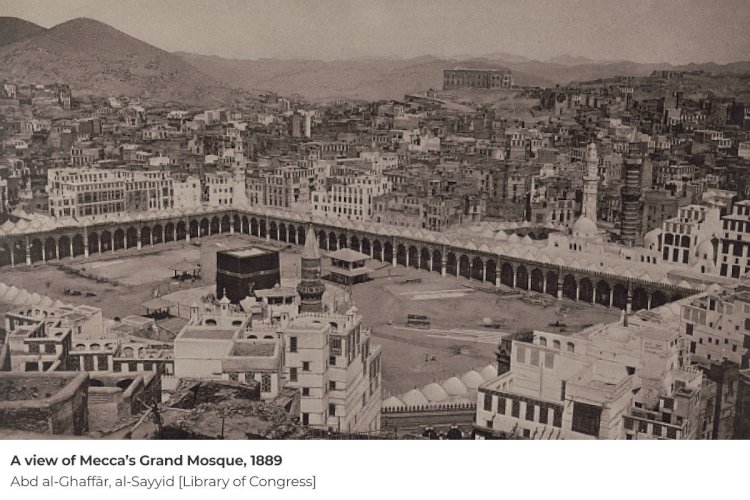
Dimensions of the Sacred Kaaba
Historians have varied in their accounts of the dimensions of the Kaaba, which is a natural outcome of differences in the measurement units used, such as the hand span (dhira al-yad) and the iron cubit (dhira al-hadid). The lengths of these units vary; according to "The History of the Sacred Kaaba," the hand span ranges between 46-50 cm, while the iron cubit is 56.5 cm. Thus, using cubit measurements to describe the dimensions of the Kaaba in modern times can lead to confusion, as the meter is the standard unit of measurement today.
During the first Saudi expansion, the Kaaba was measured using modern units. The area at its base was found to be 145 square meters, and the area of the Hijr, including its wall, was 94 square meters.
The latest measurements of the Kaaba were conducted by the Hajj Research Center at Umm Al-Qura University, yielding the following dimensions:
- From the Black Stone corner to the Shami corner: 11.68 meters, including the door of the Kaaba.
- From the Yemeni corner to the Western corner: 12.04 meters.
- From the Black Stone corner to the Yemeni corner: 10.18 meters.
- From the Shami corner to the Western corner: 9.90 meters.
For the interior dimensions, historian Basalama measured it himself in 1352 AH, and found:
- From the middle of the Yemeni wall to the middle of the Shami wall: 10.15 meters.
- From the middle of the eastern wall to the middle of the western wall: 8.10 meters.
Description of the Interior of the Sacred Kaaba
The interior of the Kaaba includes several notable features. In the Syrian corner to the right upon entering, there is a stairway leading to the roof. This stairway is enclosed in a rectangular structure resembling a sealed room without windows. The eastern and northern sides are part of the original Kaaba walls. The stairway has a door with a special lock and a beautiful silk curtain embroidered with gold and silver. The southern wall of the stairway, where the door is located, is 225 cm wide, and the western wall is 150 cm wide. Upon ascending the stairway to the roof, one encounters a small door and another similar one on the left, both leading to the space between the two roofs of the Kaaba, which is 120 cm apart. The stairway ends at the roof with a skylight covered by a secure lid to prevent rain from entering, which is lifted when accessing the roof.
Inside the Kaaba, there are three wooden columns supporting its ceiling. These columns, placed by Abdullah bin Zubair over 1350 years ago, are made from one of the strongest types of wood. The columns are brown with a slight blackish hue, each with a circumference of approximately 150 cm and a diameter of 44 cm. Each column has a square wooden base intricately carved. A horizontal beam runs between the three columns, supporting the roof and extending to the northern and southern walls. The columns support the first ceiling of the Kaaba and do not penetrate the second ceiling; additional wooden planks stack on top of these columns up to the second ceiling. Each column has three reinforcing rings.
The floor of the Kaaba is covered with marble, predominantly white with some colored sections. The inner walls are adorned with colored and decorated marble. The interior is draped with a red silk curtain inscribed with the Shahada and some of the beautiful names of Allah in white script, arranged in repetitive patterns of the number 8 or 7. This curtain also covers the ceiling.
There are nine marble plaques with inscriptions inside the Kaaba, in Thuluth script carved into the stone, except for one in raised Kufic script. The Kufic script plaque is made of colored marble pieces, fitted together to form the letters on a square Kufic base. All these plaques were inscribed after the sixth century AH. Between the Kaaba's door and the Door of Repentance on the eastern wall is a plaque from King Fahd bin Abdul Aziz Al Saud, indicating the date of his comprehensive restoration of the Kaaba. This makes a total of ten inscribed marble plaques inside the Kaaba, all at a height of 144 cm from the ground, except the one above the Kaaba’s inner door arch, which is more than two meters high.
The Custodianship of the Kaaba
The term "sadin" refers to the individual responsible for all matters related to the Kaaba, including opening and closing it, cleaning and washing it, dressing it with the Kiswah, repairing the Kiswah when it tears, and welcoming its visitors. The custodianship of the Kaaba is held by the Bani Shaiba family of the Quraysh tribe. On the day of the conquest of Mecca, the Prophet Muhammad (peace be upon him) handed the key of the Kaaba to the Shaiba family, saying, "Take it, O Bani Talha, forever and always, and it shall not be taken from you except by an oppressor."
The new sadin is not necessarily the son of the previous one; the key can pass to a cousin or another relative, as age determines who becomes the sadin. The chief custodian keeps the key to the Kaaba, and no one can enter it without his permission. The external Kiswah of the Kaaba is handed to the chief custodian to be installed on the ninth day of Dhu al-Hijjah each year, in the presence of members of the Bani Shaiba family, high-ranking officials, and invited guests.
Currently, the Kaaba is washed from the inside twice a year: once at the beginning of the month of Sha'ban and once on the fifteenth of Dhu al-Qi'dah. This significant honor is performed by the Custodian of the Two Holy Mosques or his representative, in the presence of the President of the General Presidency for the Affairs of the Grand Mosque and the Prophet's Mosque, his deputy for the affairs of the Grand Mosque, several ambassadors of Islamic countries, heads of Hajj missions, and other high-ranking officials. They have the honor of washing the Kaaba and wiping its walls with Zamzam water mixed with oud and rose water. After completing this task, they pray facing its walls and then offer prayers of thanks and praise to Allah, the Lord of the Worlds.
Islamic leaders and high-ranking officials, including ministers and others, often visit Saudi Arabia on official and unofficial missions. They are drawn to the Sacred House of Allah in Mecca, performing Hajj and Umrah. High-ranking officials from the General Presidency for the Affairs of the Grand Mosque and the Prophet's Mosque receive them, and sometimes the Kaaba is opened for them as a gesture of honor and respect for their positions, recognizing that they represent Muslims in their countries. They pray inside the Kaaba, following the example of the Prophet Muhammad (peace be upon him), and offer prayers to Allah.
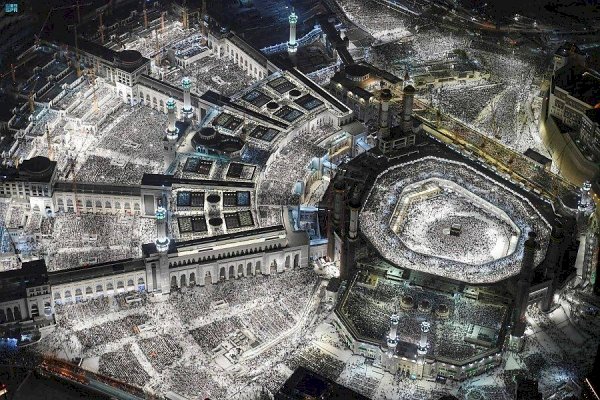
Elements of the Sacred Kaaba
The Sacred Kaaba has several important features, which we can refer to as its elements:
A. Attached Features:
These are parts connected to the structure of the Kaaba, each known by its specific name:
- The Black Stone (Al-Hajar Al-Aswad): Located inside the southeastern corner of the Kaaba, about 1.5 meters above the ground. It is a smooth, oval-shaped stone with a reddish hue, approximately 30 centimeters in diameter, surrounded by a silver frame about 10 centimeters wide, which was first placed by Abdullah bin Zubair. According to some prophetic traditions, the angel Gabriel brought the stone from paradise and gave it to Ibrahim (peace be upon him).
- Al-Multazam: The area between the Black Stone and the Kaaba's door. It is called Al-Multazam because pilgrims cling to it, praying and seeking refuge in Allah.
- The Door of the Kaaba: A single door adorned with pure gold, located on the eastern side of the Kaaba between Al-Multazam and the Black Stone. The door is 1.90 meters wide, 3.10 meters tall, and positioned 2.25 meters above the ground. The door is accompanied by its lock and key, as well as a wooden ladder covered with silver, which is used to access the door when opening the Kaaba.
- Hijr Ismail: The semi-circular wall located to the north of the Kaaba. Pilgrims must pass to its left during Tawaf (circumambulation) as passing between it and the Kaaba invalidates the Tawaf.
- Al-Mizab: The drain for rainwater falling on the roof of the Kaaba, located on its northern side and discharging water into Hijr Ismail. The first Mizab was installed by the Quraysh. It is covered with gold plates, measuring 1.95 meters in length, 26 centimeters in width, and 23 centimeters in height.
- The Yemeni Corner (Ar-Rukn Al-Yamani): One of the most renowned corners of the Kaaba, which pilgrims are encouraged to touch during each circuit of Tawaf if possible, otherwise, they point towards it. The distance between the Yemeni Corner and the Black Stone is 12.11 meters, and between the Yemeni Corner and the Syrian Corner is 11.52 meters.
- Ash-Shadharwan: A ledge attached to the base of the Kaaba’s wall from three sides, excluding the side facing Hijr Ismail. It is part of the original foundation laid by Ibrahim (peace be upon him). Metal rings are attached to it for securing the Kaaba’s Kiswah (covering).
These elements collectively contribute to the unique structure and religious significance of the Kaaba, making it the focal point of Islamic worship.
Disclaimer
The views expressed in this article are the author’s own and do not necessarily mirror Islamonweb’s editorial stance.

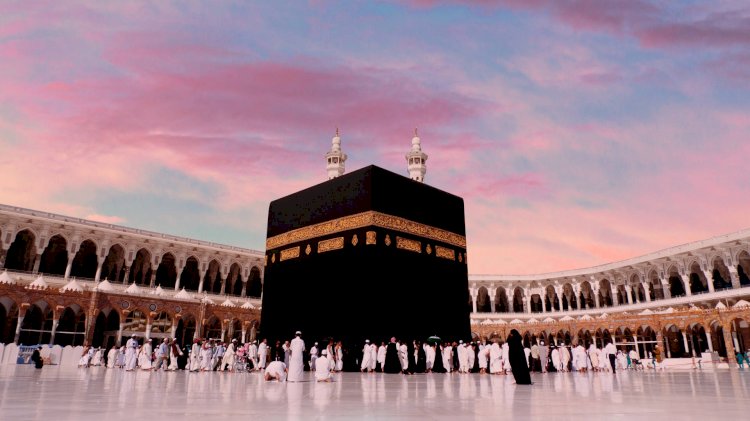




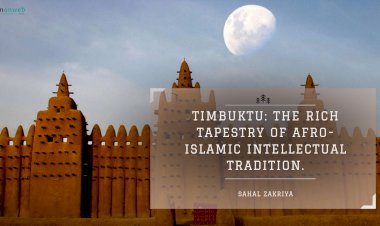
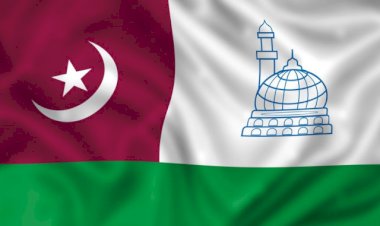
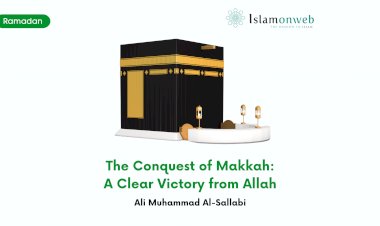
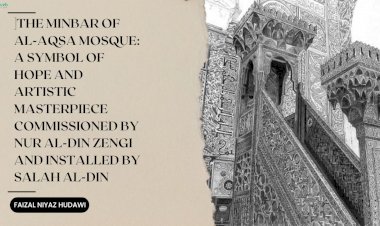














Leave A Comment